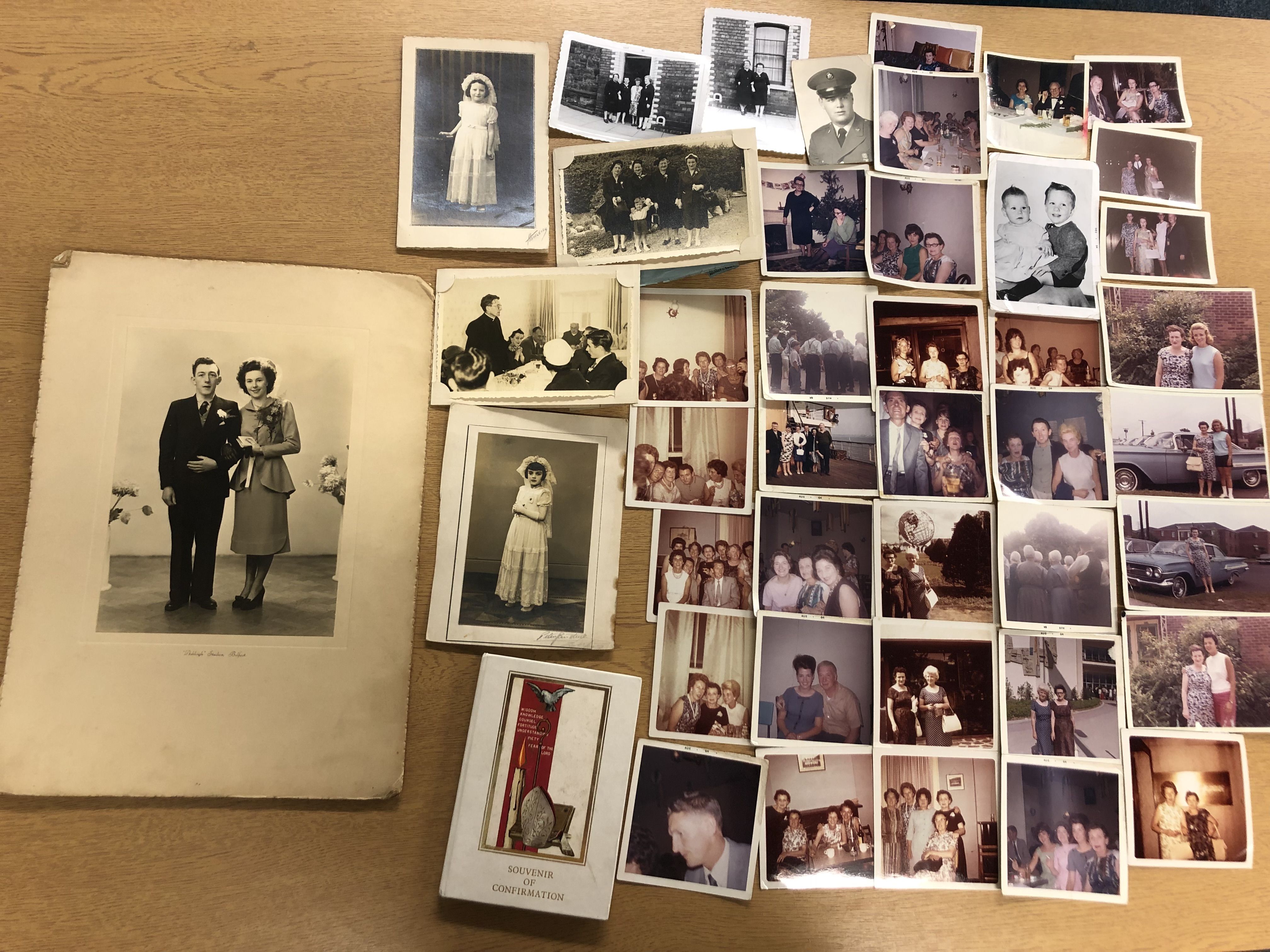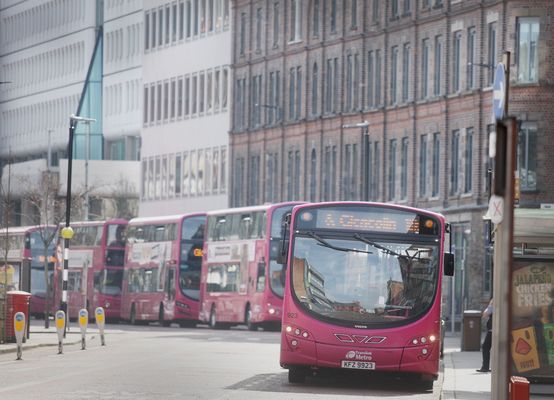COULD a pile of old photographs found in a loft in Lenadoon Avenue be those of famed Belfast footballer Harry Buckle and his family?
This is the question the Andersonstown News is seeking to answer after the photographs were handed in by Deirdre Finnegan. Deidre told the paper the photographs were found in her attic and believed they belonged to the family who had previously lived there – 47 years ago.
The collection include items such as First Communion photos and certificates from the Clonard Appeal Fund and the Family Rosary League.
Also included are original wedding photographs as well as family snaps of what appears to be a trip to America. Deirdre said when she moved into the property it was previously occupied by a man with the surname Buckle and his daughter. The property was also home to a priest whom we believe may have been a relation (perhaps a brother) of Mr Buckle.
PHOTOS: A mother with two children who we believe are of the Buckle family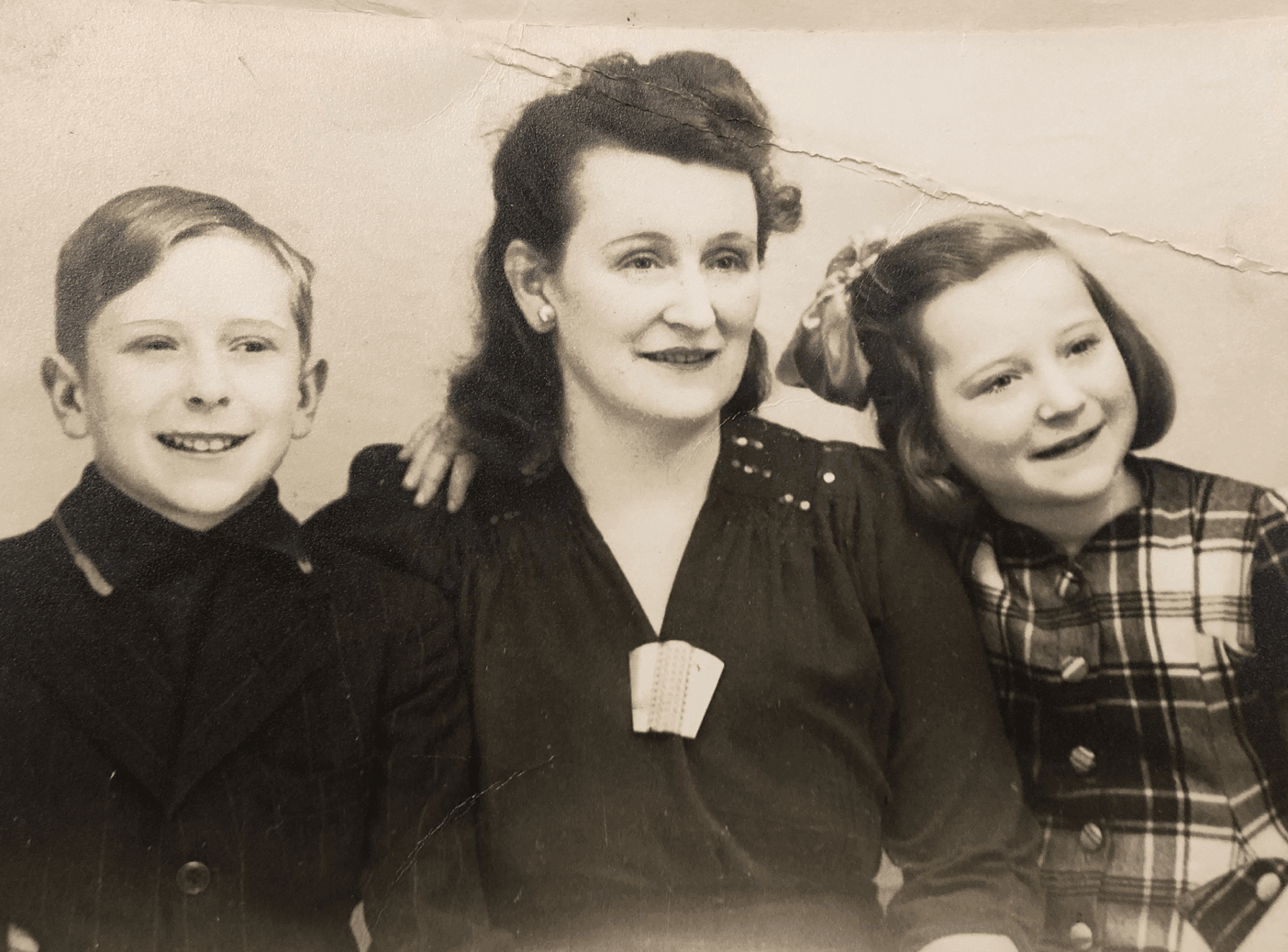
Interestingly, attached to one of the photographs was an old gas bill from 23 November 1968 for a Mr H R Buckle of 94 Percy Street in the Lower Falls. Percy Street was one of the streets which was burned out during the violence and rioting in 1969 when loyalist mobs drove many Catholic families from their homes in the lower Falls.
A Belfast Street Directory in the Andersonstown News office confirms the above address is listed as ‘vacant’ (burned out) in 1976. It's possible that the Buckle family moved from the Falls to Lenadoon and settled in the area like many other families from that time. A Family Rosary League certificate from 24 March 1954 lists Harry Buckle, his wife Mary and three children, John, Harry Jr and Joan.
GAS BILL: The gas bill for H R Buckle which was dated November 1968
Searching online for ‘Harry Buckle Belfast’ brought up not only several articles about a famous Belfast footballer, renowned and celebrated by clubs in England, Belfast and Cork, but also articles on his association with the Munster football structures following the establishment of the Football Association of Ireland in the 1920s.
Suddenly the story started to come together.
Wikipedia states a Harry Buckle was the first ever manager of Coventry City, played for the Irish national team and also played for teams such as Belfast Celtic, Cliftonville, Sunderland, Bristol Rovers and Ford FC, which later became Cork FC. Harry Buckle also scored in the final of the Gold Cup for Belfast Celtic against Glentoran in 1912.
Upon contacting the Belfast Celtic Society they were able to give us more information about footballer Harry Buckle.
BELFAST CELTIC: Harry Buckle (bottom left) to his right is Louis Crowe and wearing the horizontal stripes is Irish Revolutionary and Statesman, Oscar Traynor (goalkeeper)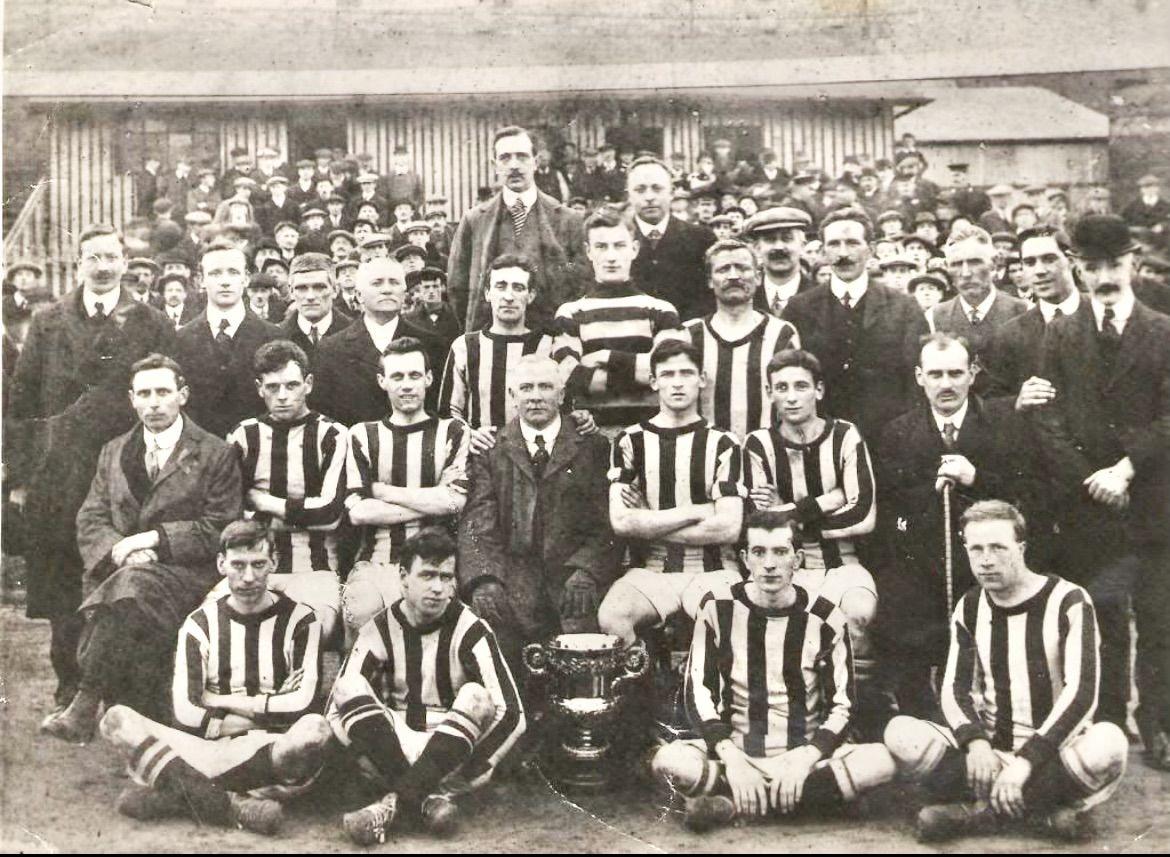
An article for ExtraTime titled: ‘Harry Buckle: The Belfast Man who Saved Munster Football’ states:
“In 1920 Harry Buckle's life was at a crossroads. In a sectarian attack, the Irish international had been thrown into the icy waters of Belfast Lough alongside 17 other Catholics.
“At the time he had been working in the Protestant-dominated Harland & Wolff shipyard while playing part-time football for Belfast Celtic when he was confronted after work one evening. Days later, he was told ‘to get out while the going was good’ by a friend in work.”
After being driven from Belfast by sectarianism following the establishment of the Northern state, Harry Buckle settled in Cork and began working for the Ford Motor Company.
ATTACK: An article from the 1920s detailing a sectarian attack on Harry Buckle - he subsequently moved to Cork
A further article in the Irish Examiner states:
“Finding little or no association football activity in the city, Buckle founded Ford F.C. and then helped found the Cork-based South Munster League for the team to play in. In addition to playing and coaching with the new club, Buckle also served as president of the Tipperary/Limerick based North Munster League and helped reform the Munster Football Association.’
Harry’s work in Cork may also have been helped by another very interesting source. The Belfast Celtic Society confirmed that during Harry’s spell at Belfast Celtic their goalkeeper was none other than famed Irish revolutionary and statesman Oscar Traynor.
GRAND OLD TEAM: Harry Buckle (bottom left) in a picture of Belfast Celtic's team. See also: Oscar Traynor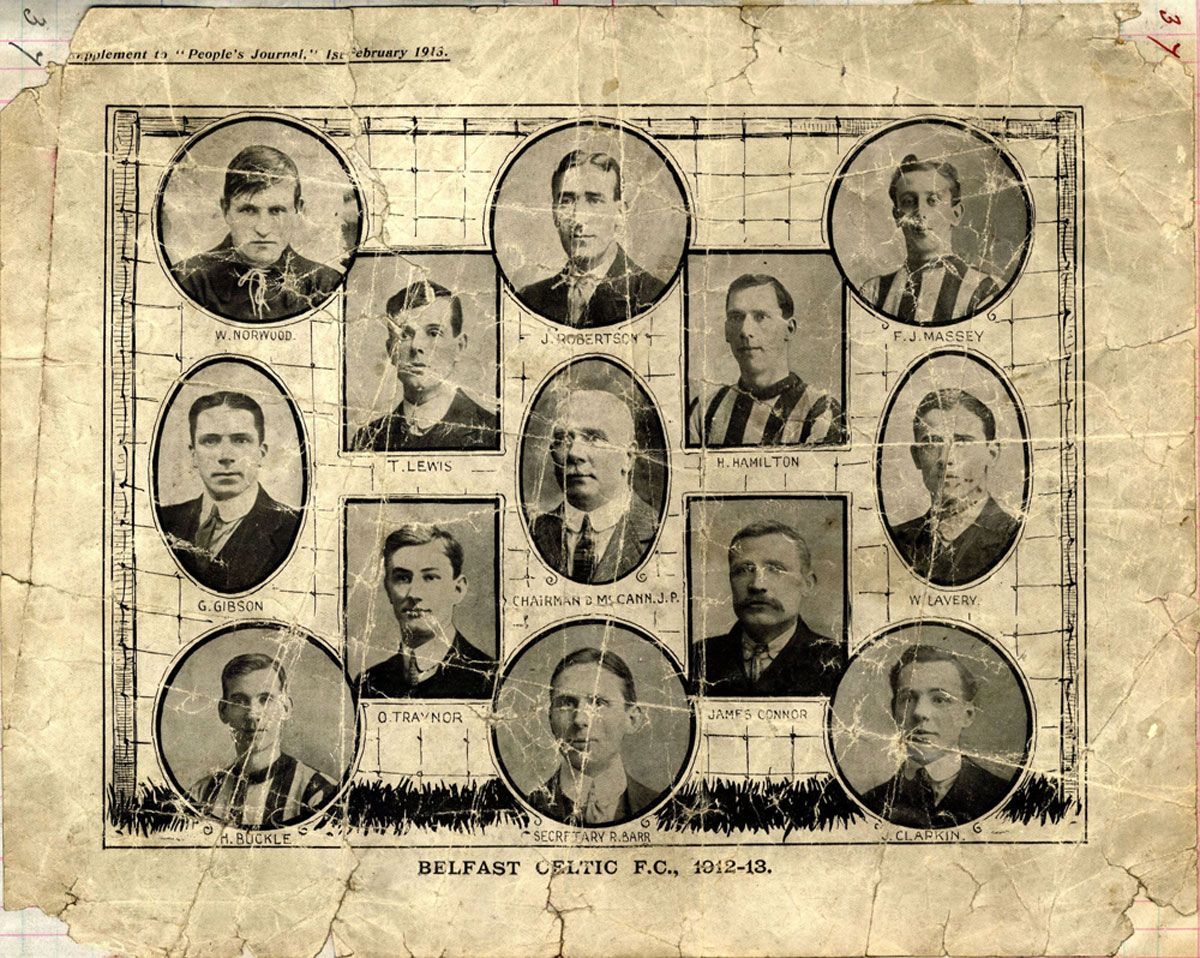
The Belfast Celtic Society said: “In the photo sitting beside Harry Buckle is a man called Louis Crowe. Louis Crowe and Oscar Traynor (goalkeeper with horizonal stripes) were both from Raheny in Dublin. Oscar Traynor was one of the leaders in the 1916 Easter Rising and played in the same team as Harry Buckle.
“Traynor and Crowe were both from Raheny and one of the oldest items in our collection is a telegram to Louis Crowe from the club telling him to get up to a training session.
“What the club used to do was give a little money to the train driver to slow down when going through Raheny, which is today part of Dublin, but then was in the country, they’d pay the driver to slow down and the pair would hop on and hitch the ride to Belfast.
“Oscar Traynor is a big name in Irish history and he went on to be the Minister for Defence during the Second World War, called ‘The Emergency’ in the Republic. Everyone said it was very appropriate a goalkeeper would go on to be Minister of Defence! After Traynor’s retirement from politics he also served as President of the Football Association of Ireland from 1948 until his death.
“We would imagine that Harry Buckle’s work with the Munster Football Association would have involved some help from Oscar Traynor as they were friends. Traynor and Buckle would have been playing for the team at the time the Titanic sank in 1912.”
PHOTOS: One of the wedding photos handed in to the Andersonstown News
Harry Sr must have returned to Belfast as his son’s family were living in Percy Street until sectarian attacks in the late 1960s forced the family to relocate to Lenadoon. Harry Sr died in 1965.
Further searches for the Buckle family produced a post on Funeral Times which stated that Harry Buckle Jr passed away peacefully in hospital on 23 November 2020 and is buried in St Joseph’s Cemetery in Hannahstown.
COVENTRY: Harry Buckle (bottom right) when he played for Coventry in 1908-1909
The Andersonstown News would like to ask readers if they know anyone from the Buckle family who would like to be reunited with these photographs and items. Please get in touch with us via phone or email j.mccann@belfastmedia.com – the photographs are currently being held in our office.

